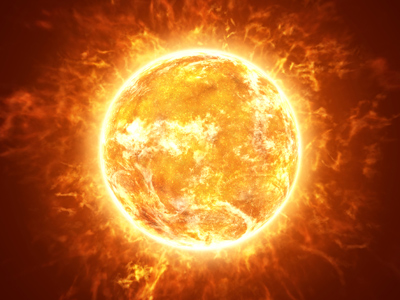
Energy - Infrared Radiation
This GCSE Physics quiz asks questions about infrared radiation. Infrared (sometimes written infra-red or infra red) radiation was discovered by the famous astronomer, William Herschel. As happens quite often in scientific discoveries, it came from noticing something unexpected, asking questions and then carrying out more tests in order to try to find answers. In this case, he had been observing the Sun.
Looking at the Sun directly is dangerous to the eye, especially through a telescope. He had been using different dark glass filters to protect his eyes during observations and noticed that some let through different amounts of light and others let through different amounts of heat. So he took this further and measured the temperature increase in different parts of a visible spectrum using thermometers.
Ready for more?
not all...
quizzers. Try to win a coveted spot on our Hall of Fame Page.







